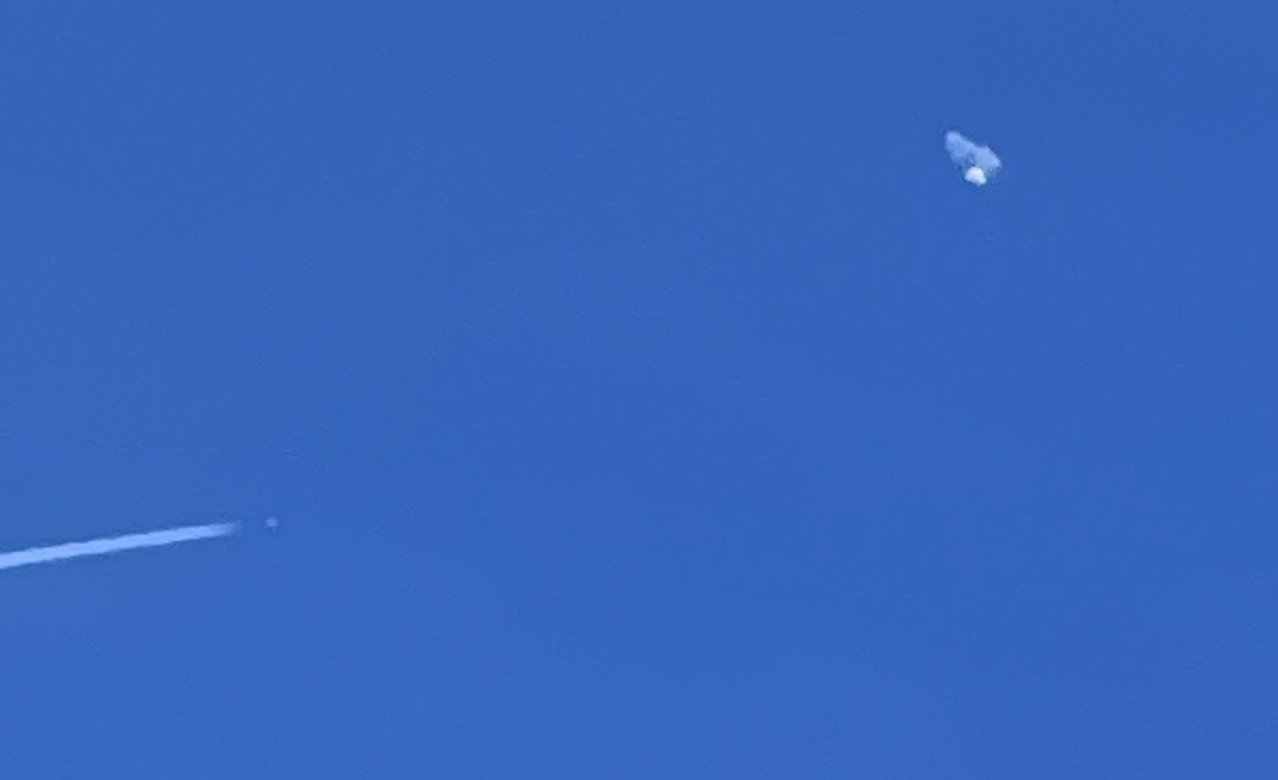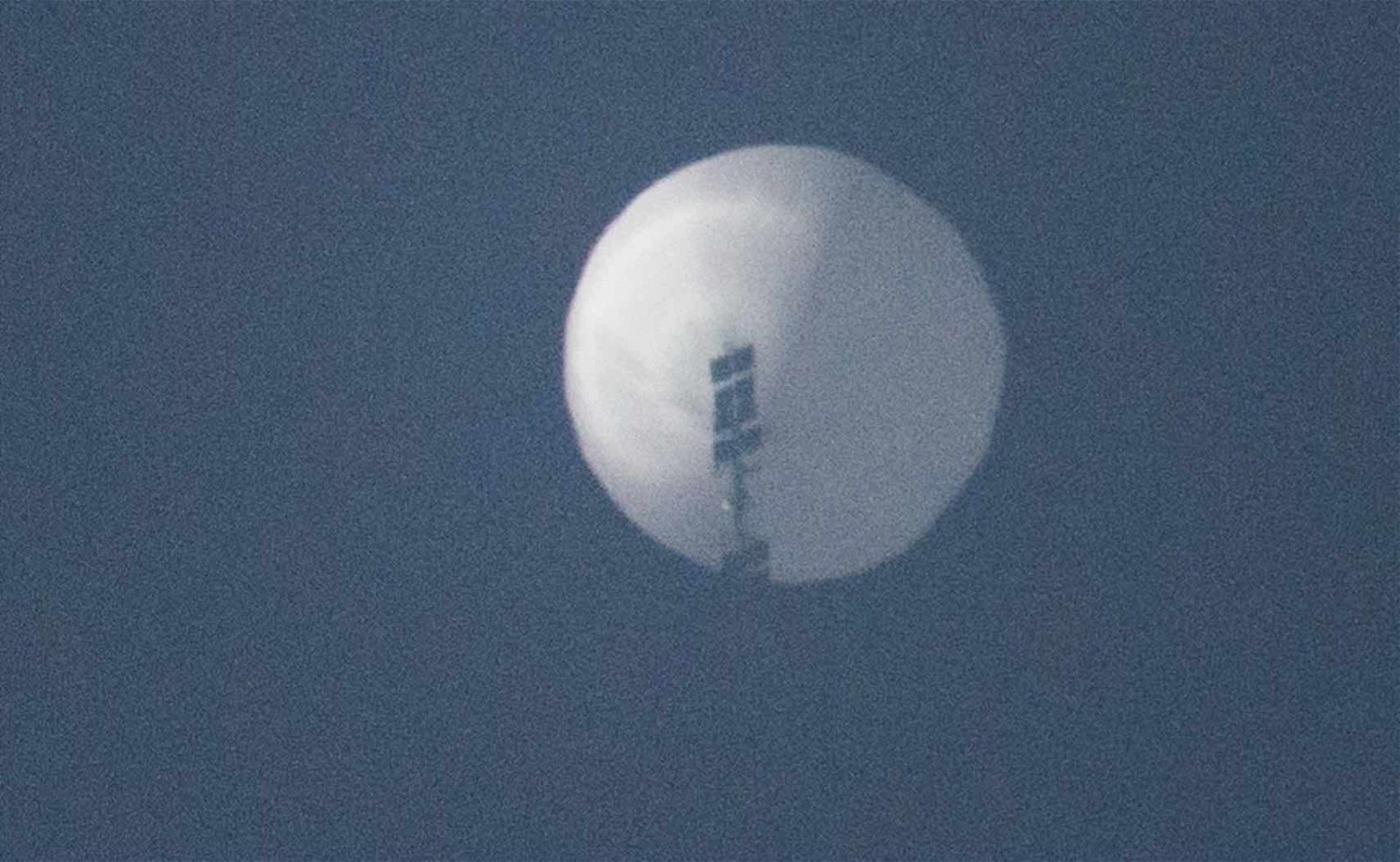On Saturday, a suspected Chinese spy balloon was shot down by the Air Force as it drifted over the Atlantic just off the South Carolina coast, ending an unusual series of events that further strained tensions between China and the United States.
Initially spotted by civilian air passengers late last week as it drifted over Montana, China quickly claimed ownership of the balloon, which sported a payload roughly the size of three school buses, claiming it was “a civilian airship used for research, mainly meteorological, purposes,” according to a statement released by the country’s Ministry of Foreign Affairs.
“Affected by the Westerlies and with limited self-steering capability, the airship deviated far from its planned course,” the statement read. “The Chinese side regrets the unintended entry of the airship into US airspace due to force majeure.”
“The Chinese side will continue communicating with the US side and properly handle this unexpected situation,” the statement added.
Following its shoot down by an Air Force F-22 Raptor over the weekend, China has characterized the U.S. response as an “attack” which they claim violates “the spirit of international law” and potentially worsens relations between the countries.
In a complaint to the U.S. Embassy on Sunday, Vice Foreign Minister Xie Feng called the shoot down a “U.S. attack on a Chinese civilian unmanned airship by military force,” adding that the U.S. “turned a deaf ear and insisted on indiscriminate use of force against the civilian airship,” which Xie said was “about to leave the United States airspace.”
In his complaint, the Vice Foreign Minister asserted that the U.S. “obviously overreacted and seriously violated the spirit of international law and international practice.”


However, China’s assertions that the U.S. decision to take down the aircraft was in violation of “the spirit of international law” couldn’t be any further from accurate.
Donald Rothwell, a Professor of International Law at Australian National University, said that while the incident “tested the bounds” of laws governing the appropriate actions a country may take under such circumstances, “international law is clear with respect to the use of these balloons over other countries’ airspace.”
“[T]he US was on very firm legal footing in its response to the Chinese balloon,” Rothwell wrote in a piece at The Conversation. “Overflight could only have been undertaken with US permission, which was clearly not sought.”
The Pentagon has maintained that the object was observed moving over “sensitive sites” during the course of its journey across the U.S., seemingly displaying the ability to linger over high-security facilities and maneuver against the wind.
During a press conference last week, Pentagon spokesman Pat Ryder said he would “not go into any specific intelligence” the U.S. had obtained about the object but confirmed that it “has the ability to maneuver,” seemingly contradicting China’s assertions that the object had merely been a wayward weather balloon.
Ryder added that the balloon had “violated U.S. airspace and international law, which is unacceptable.”
China’s outrage in response to the incident falls limp in light of the facts: available evidence suggests that the balloon, which China readily admits originated from within its borders, was both steerable and had been conveniently positioned over sensitive areas as it made its unauthorized entry into airspace over North America. The U.S. had every right to shoot it down and did so once it was safely positioned over U.S. coastal waters.
Additionally, while China claimed ownership of the suspected spy balloon once the object’s presence over the U.S. began receiving widespread media attention, Pentagon officials revealed on Friday that President Biden had been briefed on the situation earlier in the week and that the U.S. had been tracking the object by as early as last Tuesday.
Although the great surveillance balloon scare of 2023 may have ended, it seems likely that the trouble it will give rise to is just beginning. The events of recent days offered Americans a look at the palpable reality of security challenges arising from the East, and this wasn’t the first time it has happened: in the wake of recent partisan finger-pointing over President Biden’s handling of the balloon crisis, pundits were quick to point out that several similar incidents are believed to have transpired during the last administration, pointing to a broader surveillance effort by China that has remained underway for years, albeit unknown to the American public.
Last week, Canadian officials released a statement regarding a “potential second incident” the country was monitoring.
“Canadians are safe and Canada is taking steps to ensure the security of its airspace, including the monitoring of a potential second incident,” read a statement issued by Canada’s Department of National Defence.
“NORAD, the Canadian Armed Forces, the Department of National Defence, and other partners have been assessing the situation and working in close coordination,” the statement read. Over the weekend, Canadian officials said they “unequivocally” supported the U.S. decision to shoot down the balloon on Saturday.
On Monday, China also confirmed ownership of a balloon spotted over Latin America in recent days.
Officials have also revealed that earlier in Biden’s presidency, a similar incident occurred involving the brief transit of a Chinese balloon over the continental U.S. However, the recent incident was unique on account of the widespread coverage it received and the observation of the suspected spy balloon by countless Americans prior to being taken down on Saturday.
Following the revelation that the suspected Chinese spy balloon was operating above the U.S., Secretary of State Antony Blinken postponed a scheduled trip to Beijing last week.
In a phone call with Chinese diplomat Wang Yi, Blinken called the incident “an irresponsible act” and said that the country’s actions “on the eve of my visit is detrimental to the substantive discussions that we were prepared to have.”
According to sources speaking on background, the AP reported last week that Secretary of Defense Lloyd Austin and Chairman of the Joint Chiefs of Staff Gen. Mark Milley had strongly cautioned the president about shooting down the object before it was over the Atlantic, fearing its large payload might endanger Americans.
The Pentagon said on Friday that the likelihood of obtaining important information about the Chinese craft and its surveillance capabilities was “not great,” although recovery efforts over the weekend worked to collect debris from the spy balloon’s payload for further inspection by American national security agencies.
Micah Hanks is Editor-in-Chief and Co-Founder of The Debrief. Follow his work at micahhanks.com and on Twitter: @MicahHanks.

